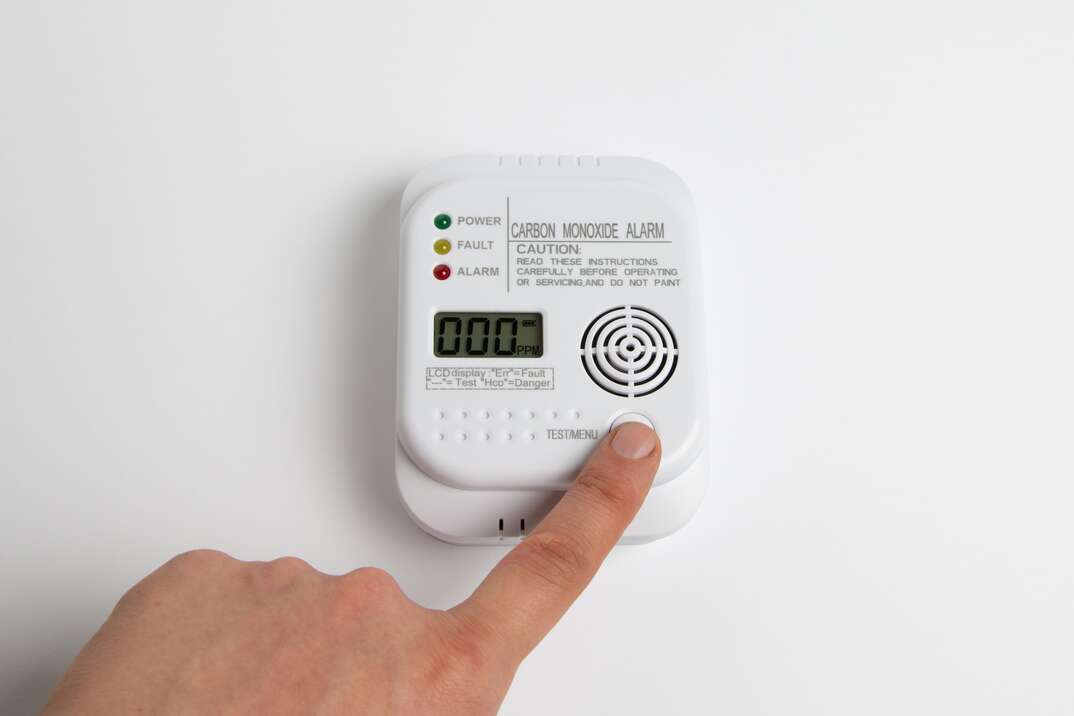5 Warning Signs of Carbon Monoxide Leaks in Your HVAC System

Our homes are our sanctuaries. They are places where we feel most comfortable, safe and warm. Unfortunately, a silent threat can lurk within the home system designed to keep us cozy and warm.
Read More Heating and Cooling Articles
That threat is the potential for a carbon monoxide leak from the HVAC system and it shouldn’t be ignored. Find out the warning signs and the safeguarding steps you can take.
What Are the Dangers of Carbon Monoxide Leaks?
Carbon monoxide is an invisible, odorless gas produced by incomplete combustion of fuels, such as natural gas, propane and oil. If your HVAC system is functioning properly, it safely vents this gas outside, where it harmlessly evaporates into the air. However, a malfunctioning furnace or blocked flue can lead to carbon monoxide leaking into your living space.
The dangers of CO are severe. When a person breathes in this noxious gas, it displaces oxygen in their bloodstream, leading to suffocation and potentially death. Even low levels of carbon monoxide exposure can cause symptoms that may feel like the flu, such as dizziness and fatigue. Additionally, long-term exposure can have neurological consequences, such as memory loss, difficulty concentrating and decreased coordination.
Unfortunately, the danger of CO is that our eyes can’t see it and our noses can’t smell it. However, there are several signs you can look out for that suggest a potential leak:
- Faulty furnace operation: If your furnace is struggling to ignite, frequently blowing out its pilot light or producing excessive soot or rust, it might be malfunctioning and producing CO.
- Discoloration around the furnace: Look for yellow or brown stains around your furnace or flue pipe as this discoloration might indicate incomplete combustion and potential CO leakage.
- Excessive condensation: Heavy condensation on windows or walls near your furnace can signal venting issues that could trap CO inside.
- Burning odors: While CO itself is odorless, malfunctioning appliances can sometimes emit a faint burning smell, which indicates incomplete combustion and potential CO production.
- Rusty flue pipe: Rust weakens flue pipes, increasing the risk of cracks that allow CO to leak into your home.
What Symptoms or Health Effects Are Associated With Carbon Monoxide Exposure?
Low-level carbon monoxide exposure symptoms mimic the flu, but these can vary depending on the severity and duration of exposure. Here's a symptom breakdown:
Low-Level Exposure
- Headaches
- Nausea or vomiting
- Dizziness or lightheadedness
- Fatigue
- Shortness of breath
- Confusion or disorientation
- Chest pain
Mid-Level Exposure
- Cognitive impairment
- Memory loss
- Difficulty concentrating
- Decreased coordination
- Respiratory issues (e.g., exacerbation of asthma, chronic bronchitis)
- Cardiovascular problems (e.g., heart attacks, arrhythmias and hypertension)
High-Level Exposure
- Fetal harm in pregnant women
- Long-term cognitive deficits
- Increased risk of certain cancers
- Decreased quality of life (e.g., fatigue, irritability or depression)
More Related Articles:
- Hiring an HVAC Tech? Here are 5 Top Tips
- What's in My HVAC Technician's Van?
- HVAC Out? 5 Common Causes and Quick Fixes for Each
- How Much Does an HVAC Filter Cost?
- HVAC Upkeep Costs: Everything You Need to Know
Suspect a Leak? Follow These Steps
Here's what to do if you suspect a carbon monoxide leak:
1. Evacuate immediately: Leave your home and get everyone to fresh air, and don’t reenter until the danger has been addressed.
2. Call emergency services: If anyone is experiencing severe symptoms, call 911 or your local emergency number immediately.
3. Turn off the furnace: Locate the gas supply valve to your furnace and turn it off as this will prevent further CO production.
4. Open doors and windows: Ventilate your home by opening all windows and doors to remove any lingering CO.
5. Don't use appliances: Avoid using gas or electrical appliances that could spark and ignite any remaining CO.
6. Call a qualified technician: Call a licensed and qualified HVAC technician to diagnose the problem and ensure your system is safe to operate before restarting it.
7. Invest in carbon monoxide detectors: Install CO detectors on every floor of your home, ideally outside sleeping areas, and test them regularly according to the manufacturer's instructions.
Taking Precautions Is Key
Regular furnace maintenance, including cleaning and professional inspections, can help prevent carbon monoxide leaks. By understanding the warning signs and taking immediate action if you suspect a CO leak, you can help to safeguard your home and ensure the safety of your loved ones. Remember, a little vigilance can go a long way in protecting your family from the silent threat of carbon monoxide.
Elocal Editorial Content is for educational and entertainment purposes only. Editorial Content should not be used as a substitute for advice from a licensed professional in your state reviewing your issue. Systems, equipment, issues and circumstances vary. Follow the manufacturer's safety precautions. The opinions, beliefs and viewpoints expressed by the eLocal Editorial Team and other third-party content providers do not necessarily reflect the opinions, beliefs and viewpoints of eLocal or its affiliate companies. Use of the Blog is subject to the
Website Terms and Conditions.The eLocal Editorial Team operates independently of eLocal USA's marketing and sales decisions.



